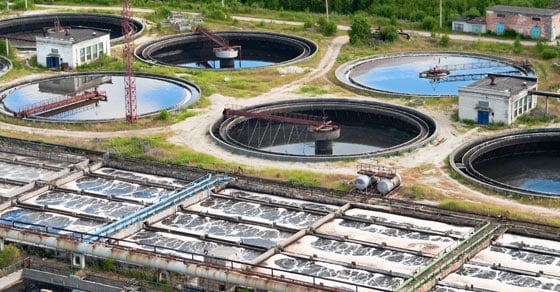As the world’s growing population puts a strain on existing resources, never before has it been more important to see wastes in a new light – to reuse or recover materials from “wastes” – transforming them into raw materials that can be reused anew. This is especially true in regard to nutrient recovery.
In an effort to highlight the ongoing research into sustainable reuse and recovery of waste materials, we will be highlighting new research around a specific topic each month. This month, we are showcasing research focused on recovering nutrients from wastewater treatment.
Nutrient Recovery: Essential to Long-term Sustainability
The topic of recovering nutrients from wastewater is certainly nothing new; it has been at the forefront of sustainability efforts as water quality issues resulting from nutrient overload continue to gain global attention.
And while this topic has been a focus in recent years, the problem is still far from resolved. Although likely years away from commercialization, recent research, however, looks to bring efficient and economic nutrient recovery from wastewater one step closer to a realized goal.
Why Nutrient Recovery?
There are two key factors driving the push for nutrient recovery from waste streams such as wastewater and manure:
Eutrophication: An increasing phenomenon in which excess nutrients in waterways foster algal blooms, which subsequently create hypoxic areas known as dead zones, that cannot support aquatic life and present a number of ecological and health-related concerns.
Nutrient Demand: An expanding global population is demanding more nutrient inputs than ever before, some of which are finite, or produced at great expense, leaving many looking for more sustainable alternatives.
In short, the nutrients we are increasingly dependent on are going to waste and causing environmental damage.
A number of treatment options for nutrient removal are currently employed in the wastewater treatment industry. However, in most cases, these methods are often costly and inefficient, leaving nutrients to make their way into waterways. Additionally, treatment methods have historically focused on removal over recovery, and therefore do not typically take advantage of the valuable nutrient content that could be captured and used.
This, along with a growing focus on water quality issues, has spurred an ongoing movement to find technologies that are not only economic to implement, but that are also more effective and can take full advantage of the nutrients currently being wasted.
Researchers at Aalto University in Finland have been examining nutrient recovery from wastewater and found a process that looks to be highly promising.
The process, which can simultaneously recover both nitrogen and phosphorus, works by adding calcium hydroxide to the wastewater in order to raise its pH and convert ammoniacal nitrogen to gaseous ammonia. This ammonia is then separated and dissolved in sulfuric acid to produce ammonium sulfate, while the phosphorus is precipitated out along with calcium salts.
The researchers noted that their process requires far less energy and chemicals when compared to the more commonly utilized nitrogen-removal approach of nitrification-denitrification.
After successful lab-scale trials, the team will move on to pilot-scale testing.
In other research, an unlikely candidate has also made headlines for similar nutrient recovery efforts; XploSafe, a company that provides explosive detection measures, was one of six companies to receive a portion of a 1.8 million grant as part of the EPA’s Small Business Innovation Research Program. The program is aimed at finding sustainable solutions to a myriad of environmental problems.
The company’s technology relies on bio-degradable sorbents to capture nutrients from both primary and secondary wastewater. The low-cost sorbents can then be applied as a fertilizer product providing nutrients and minerals to soil.
Through their studies, the company has proven their sorbents to be successful both economically and effectively at capturing targeted nutrients (nitrogen and phosphorus included). They have also proven the resulting impregnated sorbent to be an effective fertilizer without environmental risk. The company is now working toward commercialization.²
Through the same program, Microvi Biotech, Inc., a San Francisco-based group focused on biocatalytic technology, was also selected to receive a portion of the funding for their efforts in wastewater treatment.
The company intends to use high-efficiency microorganisms in biocatalysts to remove phosphorus from wastewater sources. Their effort also creates an opportunity for phosphorus to be recovered and utilized as a fertilizer.
Conclusion
The need for nutrient recovery systems in wastewater treatment has never been more apparent. In addition to creating a more sustainable nutrient cycle, the ability to recover and reuse nutrients from such wastes could reduce dependence on some other more energy-intensive processes used to synthesize fertilizer products and reduce our dependence on mined, finite mineral resources. It would also provide municipalities the opportunity to create a revenue source in place of costly nutrient removal endeavors.
While research is ongoing, recent efforts have further advanced the goal of a closed loop nutrient cycle, helping to relieve eutrophication from nutrient runoff, while also allowing us to take full advantage of the nutrients our growing world demands.
FEECO has long been helping customers to transform recovered nutrients into premium fertilizer and soil amendment products through feasibility and pilot testing, process design, custom process equipment, and engineering services. For more information on our capabilities around recovered nutrients, contact us today.



